Catégories
|
Catégories principales > 07 - ENVIRONNEMENT > 7.5 - Dégradation : Impact, Désertification
7.5 - Dégradation : Impact, Désertification |
Documents disponibles dans cette catégorie (298)
 Ajouter le résultat dans votre panier Affiner la recherche
Ajouter le résultat dans votre panier Affiner la recherche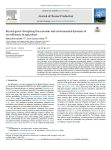
Article
This paper evaluates the economic and environmental implications of adopting eco-efficient irrigation methods in agriculture by delving into the nuanced interplay between technological efficiency, market dynamics, and government interventions. I[...]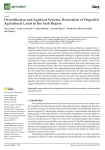
Article
F. Ziadat ; G. Conchedda ; F. Haddad ; J. Njeru ; A. Brès ; M. Dawelbait ; L. Li |The FAO estimates that 1660 million hectares globally are degraded due to human activities, with over 60% of this degradation affecting agricultural lands, including croplands and pastures. Given that 95% of global food production depends on lan[...]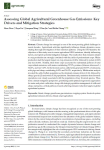
Article
Climate change has emerged as one of the most pressing global challenges in recent decades. Agricultural activities significantly influence climate dynamics, necessitating thorough investigation of their emission patterns. Using the FAO datasets[...]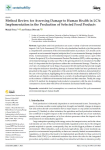
Article
Agriculture and food production can cause a variety of adverse environmental impacts. Life Cycle Assessment (LCA) is the only standardised method so far that provides a comprehensive assessment of the environmental burden of products. LCA result[...]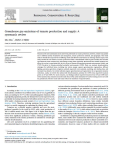
Article
Numerous life cycle assessments (LCA) have been performed on tomato production; however, results vary greatly due to different system boundaries and assumptions, tomato production methods, and geography. This study seeks to identify the major dr[...]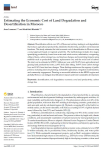
Article
Desertification affects over 90% of Moroccan territory, leading to soil degradation that reduces agricultural productivity, diminishes biodiversity, and alters environmental functions. This study estimates the total economic cost of desertificat[...]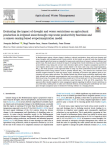
Article
In Mediterranean regions, climate change is leading to reduced precipitation, along with more frequent and severe droughts, and prolonged periods of water scarcity. In this context, as reservoir levels drop dramatically, some irrigated agricultu[...]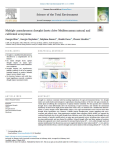
Article
G. Elias ; G. Majdalani ; D. Renard ; G. Faour ; F. Mouillot |Drought is a keystone constraint with far-reaching implications for agro-environmental threats. Yet, drought indices are mostly hydro-meteorological or agricultural, obscuring evidence of the key role agro-ecosystem diversity plays in buffering [...]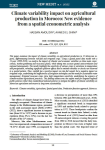
Article
This paper examines the impact of climate variability on agricultural production in 12 Moroccan regions, differentiating between rain-fed and irrigated crops. Using a spatial panel data model over 1999-2019, we analyze the impact of climatic and[...]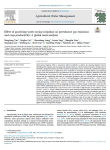
Article
M. Tan ; N. Cui ; S. Jiang ; L. Xing ; S. Wen ; Q. Liu ; W. Li ; S. Yan ; Y. Wang ; H. Jin ; Z. Wang |Water-saving irrigation (WSI) is extensively utilized worldwide to address the growing disparity between dwindling water supplies and increasing food demand. Moreover, WSI has attracted extensive attention for its potential to mitigate greenhous[...]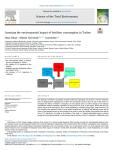
Article
The technique of fertilizer consumption increases yields from agriculture, but because it involves chemicals, there are disagreements regarding how it affects the environment. Based on this, the aim of this study is to investigate the effects of[...]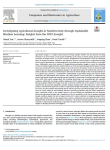
Article
C. Xue ; A. Ghirardelli ; J. Chen ; P. Tarolli |Agricultural drought is a complex natural hazard involving multiple variables and has garnered increasing attention for its severe threat to food security worldwide. In the context of climate change and the increased occurrence of drought events[...]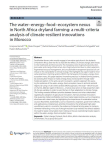
Article
Smallholder farmers, who mostly engage in low-value agriculture in the drylands of Northern Africa, were the first to have felt the effects of climate change, with threats to their livelihoods and food security. The increasing costs of agricultu[...]
Article
M.M. Mliyeh ; Y. Ait Brahim ; E.-I. Koutsovili ; O. Tzoraki ; A. Zian ; M. Aqnouy ; L. Benaabidate |Drought is a severe disaster, increasingly exacerbated by climate change, and poses significant challenges worldwide, particularly in arid and semi-arid regions like Morocco. This study aims to assess and monitor drought using a multi-index appr[...]
Article
Ensuring sustainability in the production and marketing of agricultural and food products after natural disasters is of critical importance to maintain beneficial nutrition for society. Examining the effects of earthquakes on the agricultural an[...]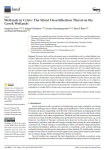
Article
This study deals with the information gap on desertification risk for wetland habitat types in Natura 2000 network sites of Greece. Using the Environmentally Sensitive Areas (ESA) index as a proxy, all Natura 2000 wetland habitat types have been[...]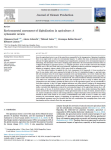
Article
C. Huck ; A. Gobrecht ; T. Salou ; V. Bellon-Maurel ; E. Loiseau |Since the agricultural sector is one of the main drivers responsible for the transgression of planetary boundaries, there is an urgent need to reduce its environmental impacts. To address this issue, international institutions advocate for digit[...]
Article
V. Gumus ; N. El Moçayd ; M. Seker ; M. Seaid |The present study evaluates the future drought hazard in Morocco using a Multi-Model Ensemble (MME) approach. First, the artificial neural network-based MME is constructed using the General Circulation Models (GCMs) from the Climate Models Inter[...]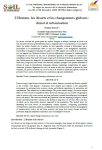
Article
Les déserts couvrent une grande partie des surfaces émergées en Afrique, Amérique du Nord et du Sud, Australie et Eurasie, particulièrement dans la « diagonale aride ». Les populations se sont adaptées depuis des milliers d'années par la maîtris[...]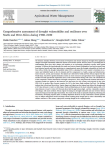
Article
M. Henchiri ; J. Zhang ; S. Li ; B. Essifi ; K. Wilson |The dynamic interplay between socioeconomic development and climate change has brought about significant changes in drought vulnerability within the African socioeconomic system. However, there is a prevailing lack of understanding about how the[...]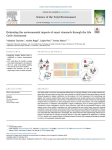
Article
V. Tascione ; A. Raggi ; L. Petti ; G. Manca |This study aimed to assess the environmental effectiveness of vineyards utilising on-site weather stations integrated with a decision support system (DSS), and to identify the critical hotspots in smart farms that have already obtained integrate[...]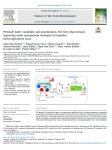
Article
J. Alves-Ferreira ; M.G. Vara ; A. Catarino ; I. Martins ; C. Mourinha ; M. Fabião ; M.J. Costa ; M.V. Barbieri ; M.L. de Alda ; P. Palma |The presence of pesticides in aquatic ecosystems poses significant risks to non-target organisms, necessitating monitoring and environmental risk assessment. This study aimed to evaluate the dynamics and environmental risk of pesticides in a hyd[...]
Article
Soil degradation is a short or long ongoing process that limits ecosystem services. Intensive land use, water scarcity, land disturbance, and global climate change have reduced the quality of soils worldwide. This degradation directly threatens [...]
Article
H. Moreno-Ramón ; J. Ulzurrum ; A. Lidon ; A. Sanjuan |Rice fields in southern Europe are mainly located in wetlands of high ecological value, such as L'Albufera, one of the most important rice-growing areas in Spain. Considering the unique characteristics of this environment, it is crucial to ident[...]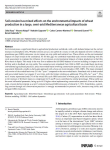
Article
C. Ruau ; V. Naipal ; N. Gagnaire ; C. Cantero-Martínez ; B. Guenet ; B. Gabrielle |Soil erosion poses a significant threat to agricultural production worldwide, with a still-debated impact on the current increase in atmospheric CO2. Whether erosion acts as a net carbon (C) source or sink also depends on how it influences green[...]









